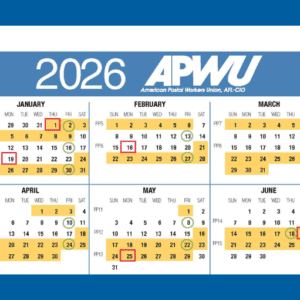March 1, 2018
Understanding Balance Billing
(This article first appeared in the March-April 2018 issue of the American Postal Worker magazine)
By Health Plan Director John Marcotte
My office gets many questions on the subject of “in- and out-of-network” and how it applies to members of the APWU Health Plan. First, I want to caution our readers that some FEHB insurance plans do not pay anything for out-of-network services. APWU High Option and Consumer Driven Option both cover out-of-network services.
Many of you understand that most, if not all, FEHB health insurance plans that do cover out-of-network services pay at a reduced rate for those services, this is true of APWU Health Plan (APWUHP) High Option and Consumer Driven Option. However, you may not know about balance billing. Balance billing is taking what the insurance company pays and then billing you for the difference.
There are large savings in charges for health care services by staying in-network, partly because we negotiate a reduced rate from the standard rate for those services and we forbid balance billing our members who receive in-network covered services.
Balance billing is complex, so let’s walk through an example. Assuming you have APWUHP High Option, have met your deductible and you go in for a covered, in-network service. The reasonable and customary rate for this service is $300, but APWUHP negotiated a $220 rate for that same service. APWUHP would then pay 90 percent, or $198. This leaves our member with a $22 bill for this service. The provider cannot bill you for any differences or additional charges for this service.
If you choose to go out-of-network for this same service, our negotiated rate does not apply and they can charge whatever they desire for their services. The provider is also not limited to what is reasonable or customary and could bill you $350 or more for the same service. The generous benefits of APWUHP would pay at a reduced percentage up to what is reasonable and customary for that location.
If we received a $350 bill for a High Option member, we would pay 70 percent of the $300, or $210 (in this case, even more than we paid for in-network service). You would owe $140 for this service, because the facility is not in-network and therefore can balance bill. Accepting our payment does not bind the health care provider to our rate scale or any limit on what they can bill.
Balance billing complaints arise mostly from our members going out-of-network and ordering medical devices from TV ads, or not understanding the cost and getting services out-of-network. The cost for services or devices can be two to three times what is reasonable or customary, leaving members with large, dubious bills.
Medicare B Retirees
We are starting to see balance billing of our Medicare B retirees, which in the few cases brought to our attention were entirely inappropriate. If you are retired, have Medicare Part B and APWUHP High Option, you should not receive a bill with a balance due for Medicare covered services from a Medicare provider.
Medicare pays for services at a negotiated rate. Medicare then pays 80 percent of a bill for covered services and APWUHP High Option pays the remaining 20 percent while waiving all copays and deductibles. In the cases we have seen, the provider or facility accepts Medicare patients, receives Medicare’s payment, receives the APWUHP payment and then are billing the patient for more money.
If you have APWUHP High Option and Medicare B, and receive a bill with a balance due, give us call right away at 800-222-APWU, so we can ensure you are being billed correctly.



